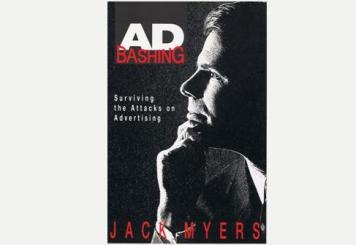Complete This Sentence: "The More Things Change..." (Classic Jack from 1993)

The following commentary was originally published in 1993, appearing in Jack Myers' book Adbashing: Surviving the Attacks on Advertising. It is even more relevant today.
Do you automatically complete the cliché "The more things change…" with "…the more things stay the same?" In business, as in society, we no longer can depend upon stability or consistency. We no longer can expect things to stay the same. Too many businesses today are locked into traditional patterns, cycles and measures of success. These molds must be broken. Paradigms must be changed. Clichés must be discarded.
- "Some things never change."
- "Everything old is new again."
- "There's nothing new under the sun."
- "Turn, turn, turn."
- "The past is precedent."
- "All the world's a cycle…"
THE MORE THINGS CHANGE… THE MORE THEY CHANGE
In the 1990s, consumers are becoming far more discriminating. Purchases are less conspicuous and far more considered. Society, like the tectonic plates in California, is shifting and resettling into new configurations. Marketers are hoping that the shifts are completed and consumers will settle into a new set of comfortable, somewhat traditional patterns. But more than likely, the shifts are an early warning sign that far more cataclysmic changes are on the horizon. Marketers may be facing shifts in consumer and communications patterns for which there are no precedents and for which they are ill prepared.
We need a new set of paradigms. Our comfortable clichés, patterns and traditions no longer hold. When we look back, we are held back – in society and in business. The past no longer provides us with adequate tools for building strategies for the future.
In a recent study, a simple old fashioned clock was shown to a large number of 13 year olds. More than one-third were unable to tell the researcher what time the clock indicated. It wasn't that they couldn't tell time, but they could only tell digital time.
This doesn't represent just a simple shift from one form of time to another. It reflects a way of thinking about life. The generations running government and business today – the generations who are creating advertising and communications – subconsciously think in cyclical terms. The new generation functions in a continuum.
Remember the old fashioned television sets with the dial - channels 2 to 13? Television once offered a limited selection of programs. The announcer could tell us "Don't turn that dial!" with a degree of assurance that we would obey. Like the clock, a TV "dial" is virtually obsolete for a majority of Americans. Television channel switchers are digital, as are our radios and our auto speedometers. The average home has more than 30 channels, with a promise that the number will increase to 60 by the end of the decade. Many homes will have 150 channels! When I was growing up in the 1950s in Utica, New York, TV programming ended for the day after The Late Movie, at 2 AM. We listened to the Star Spangled Banner, saw the jets flying over the Statue of Liberty, and then had only a test pattern to pacify us until 6 or 7 AM, when stations formally signed on. On Saturdays in Utica, there was no TV until 9 AM, when the single local station signed on with Howdy Doody. Television, each day, had a beginning, a middle and an end.
Today TV never ends. One recent morning, I turned the set on at 4 AM and scanned 38 channels with nary a test pattern confronting me. Society, too, is functioning within a new linear context in which the future is uncharted, new, and not dictated by precepts or perceptions of the past. Life is no longer a cycle; the future is no longer predicated on the past.
Jack Myers is available to speak and consult on emerging media and advertising industry trends, patterns and economics. Contact Jack at jm@jackmyers.com


